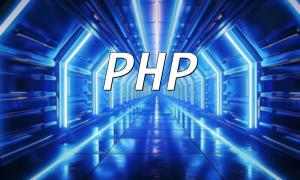LAMP is a technology stack made up of four open-source software components: the Linux operating system, the Apache web server, the MySQL database, and the PHP scripting language. As a core part of PHP development, LAMP provides developers with a powerful, flexible, and efficient development environment.
To fully understand the advantages of LAMP, we need to explore each component individually:
Linux serves as the operating system foundation of the LAMP stack and is known for its high stability and security. It provides a reliable platform that helps developers improve performance and ensure security when deploying PHP applications.
Apache HTTP Server is one of the most popular web servers, responsible for processing client requests and delivering web pages. As part of LAMP, Apache supports a variety of modules and configurations, making the PHP development process more convenient.
MySQL is a widely-used relational database management system. It helps developers store and manage data for web applications. The combination of PHP and MySQL enables developers to build and manage dynamic websites efficiently.
PHP is a widely-used server-side scripting language specifically designed for web development. With the LAMP environment, PHP can quickly generate dynamic content and easily interact with MySQL for data manipulation, allowing developers to rapidly build feature-rich web applications.
Using the LAMP environment for PHP development offers several benefits:
All LAMP components are open-source and free to use. This significantly reduces development costs. Developers can freely customize and optimize each component to meet their project needs.
Because of its widespread usage, LAMP offers robust community support. Developers can easily find extensive resources such as forums, online tutorials, and documentation to help solve various issues during the development process.
The LAMP stack is highly flexible, allowing developers to choose and configure components based on different needs. Whether for small websites or large systems, LAMP can meet diverse development requirements.
The process of setting up the LAMP stack is relatively straightforward. Below are the basic steps:
Start by selecting and installing a suitable Linux distribution (such as Ubuntu or CentOS). After installation, you will have a stable foundation to run web applications.
In the terminal, use the following command to install Apache:
<span class="fun">sudo apt-get install apache2</span>
Next, use the following command in the terminal to install MySQL:
<span class="fun">sudo apt-get install mysql-server</span>
Finally, install PHP and its related modules to ensure that PHP works with Apache and MySQL:
<span class="fun">sudo apt-get install php libapache2-mod-php php-mysql</span>
In conclusion, the LAMP stack is an indispensable environment for PHP development. Its open-source nature, flexibility, and scalability make it the preferred technology stack for many developers. Whether you are a beginner or an experienced developer, mastering the LAMP stack can help you build efficient and reliable web applications with ease.









